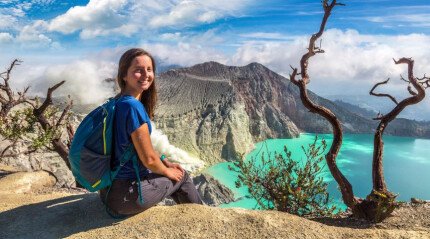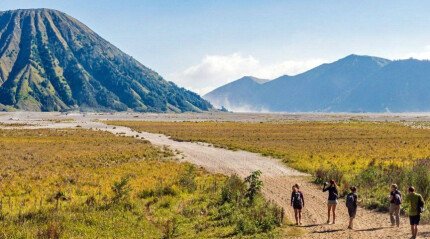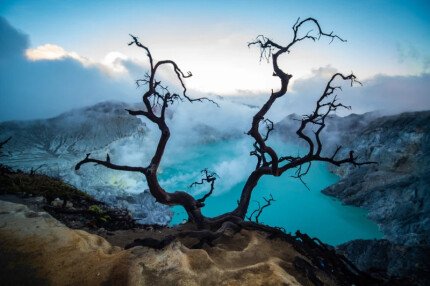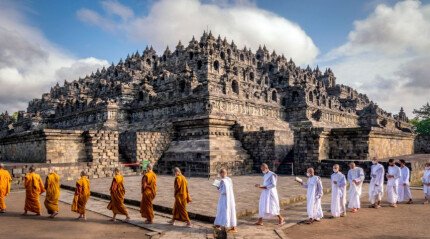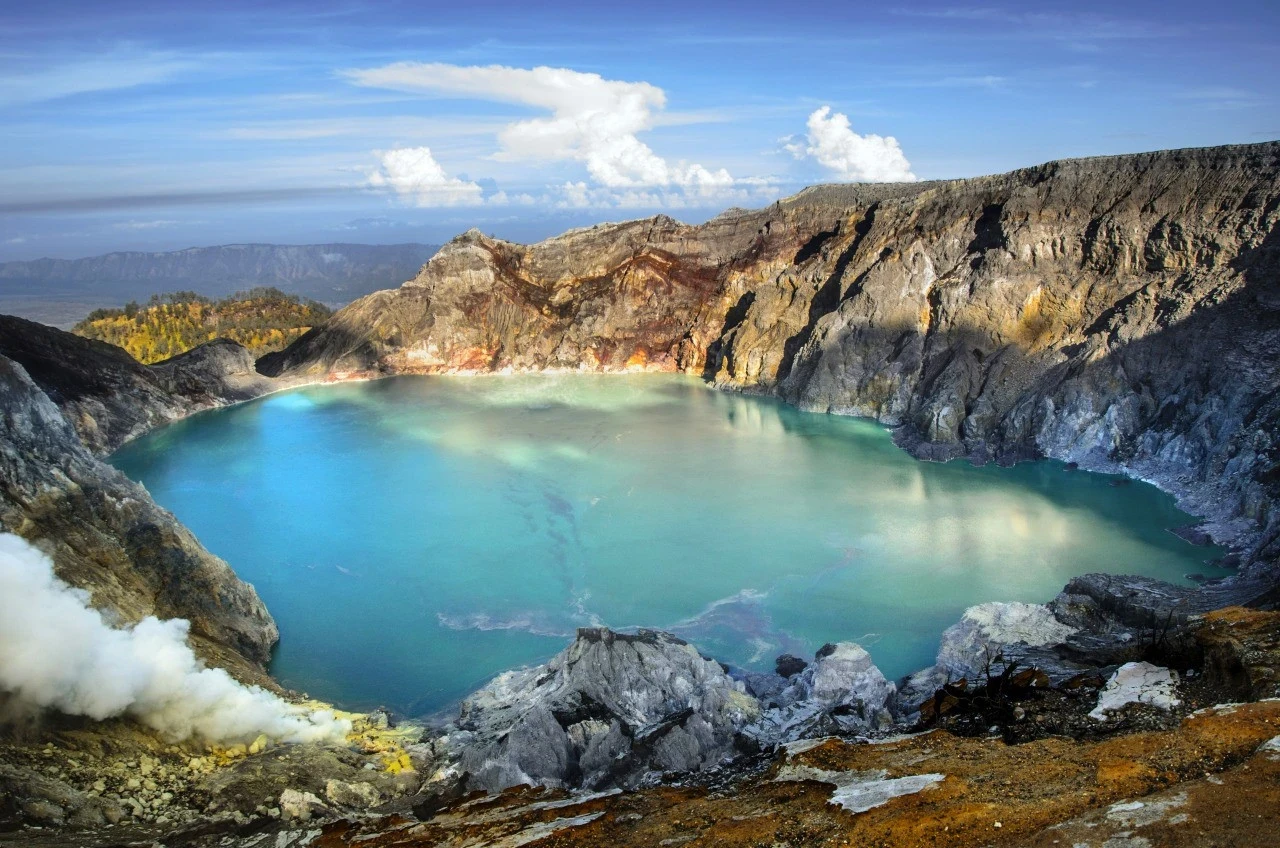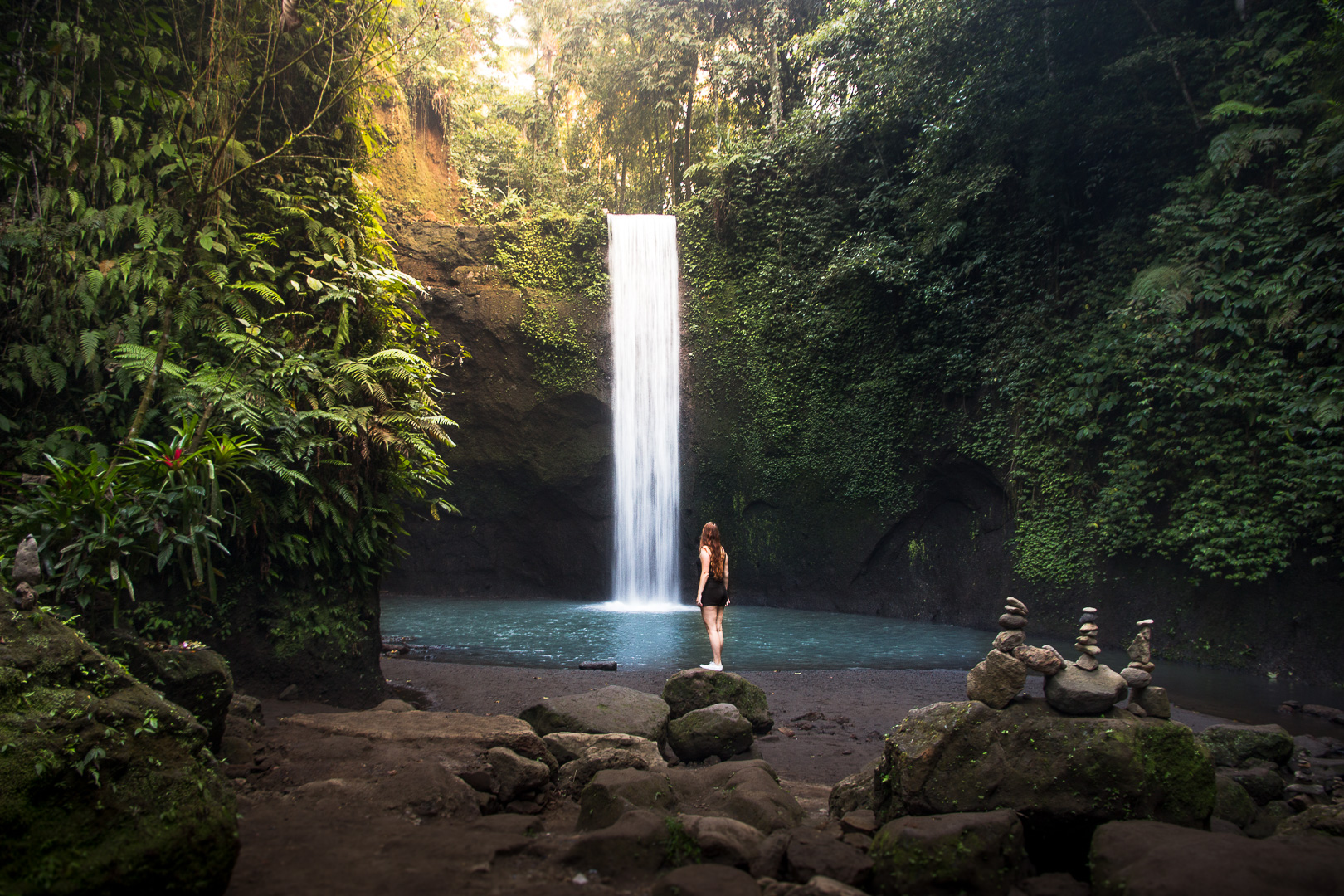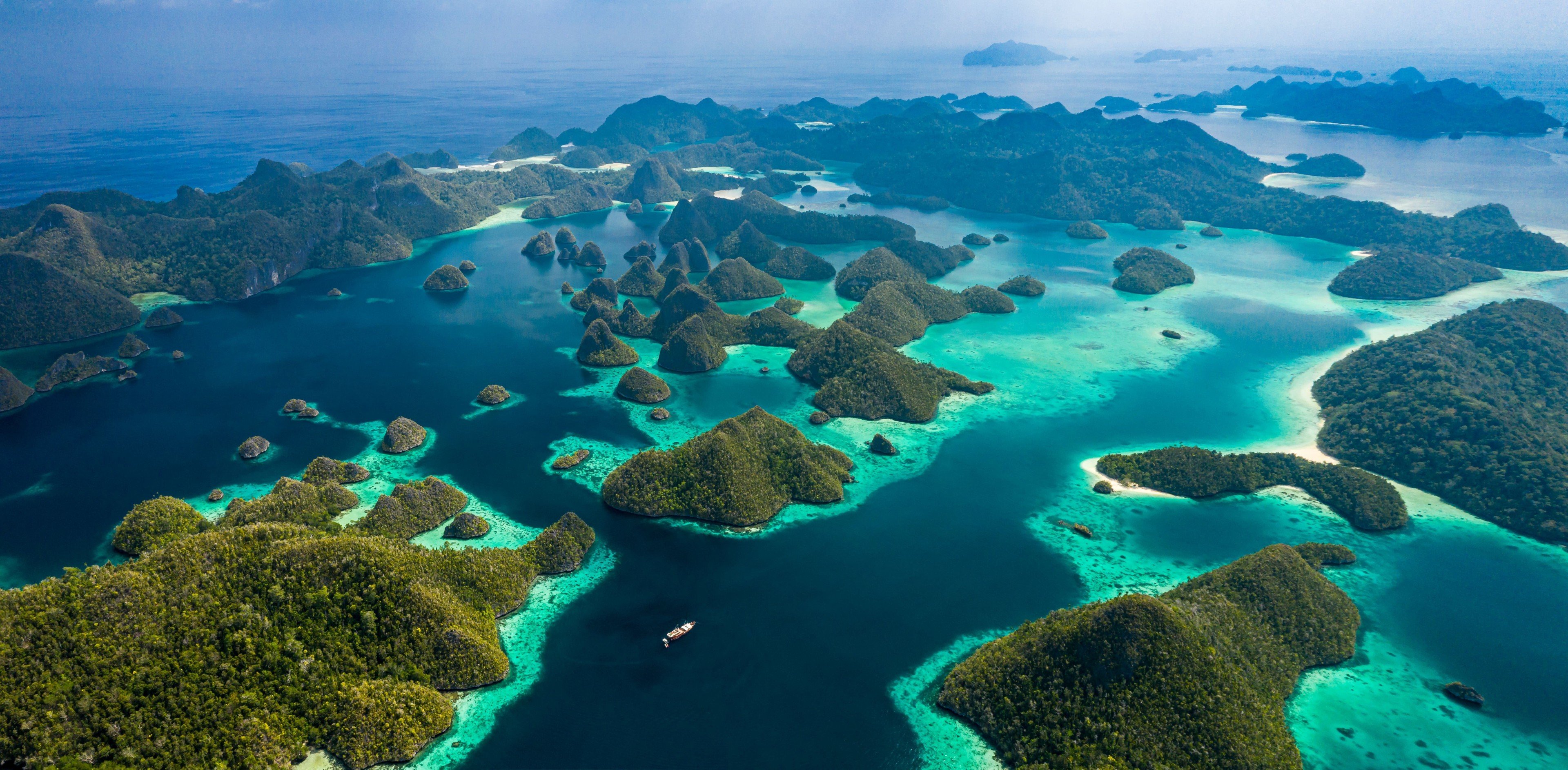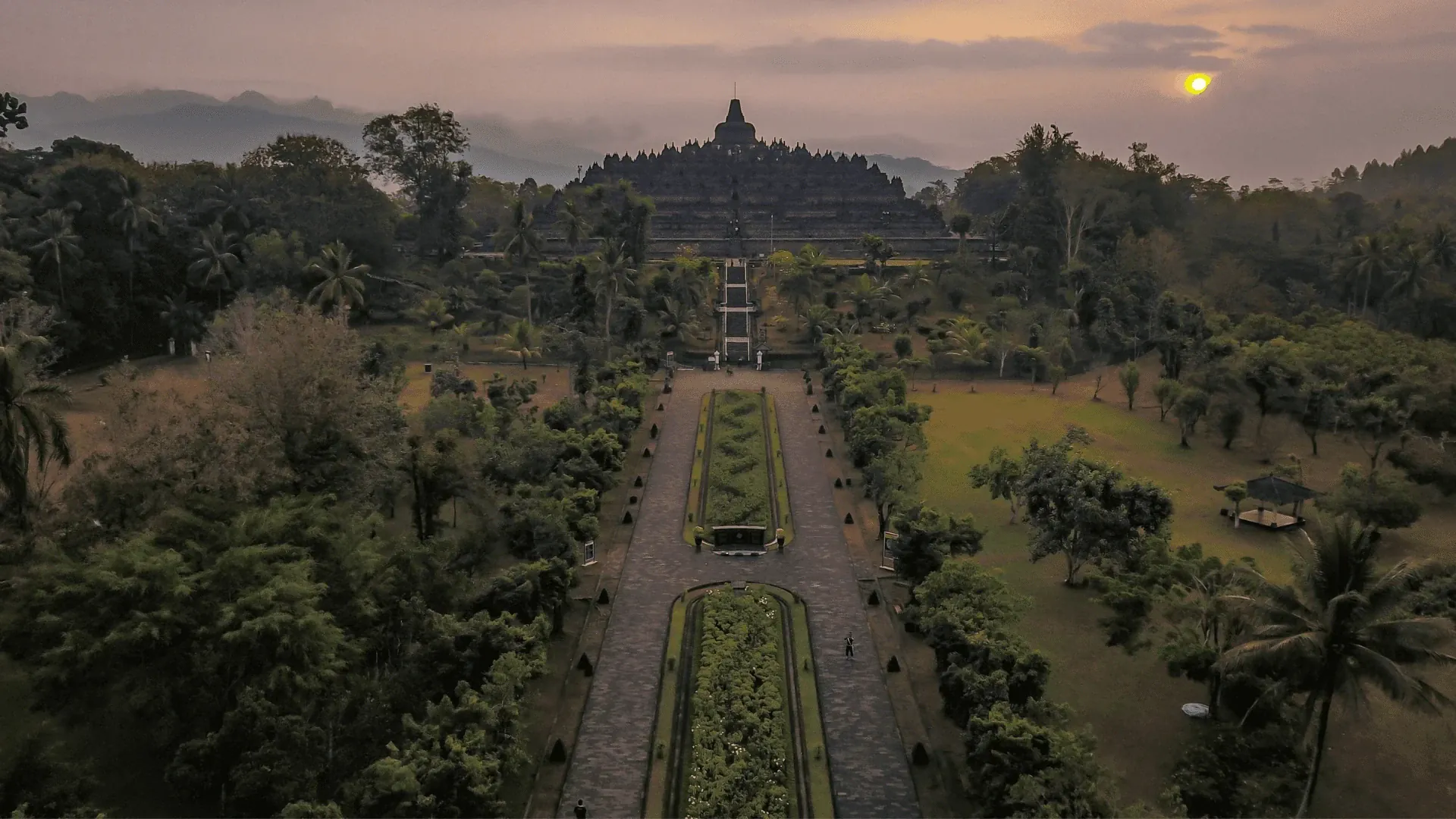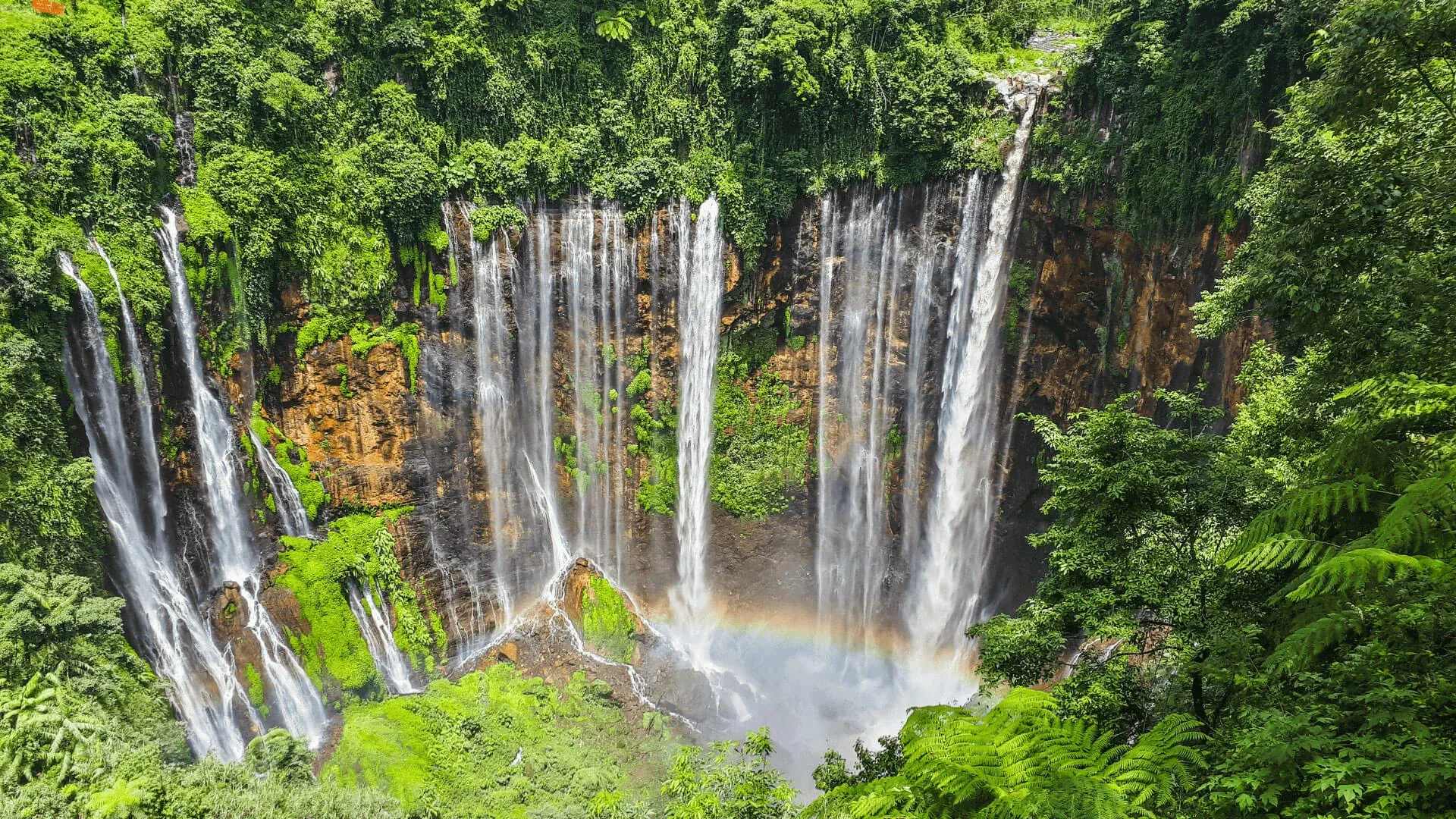7 wonders of Java island
The island of Java, located to the west of Bali, is a whole different Indonesia, brimming with a rich history, breathtaking nature, and incredible cultural treasures. This island is adorned with picturesque landscapes, including lush jungles housing hidden, enigmatic waterfalls, and active volcanoes, among which are arguably two of the most beautiful and visited in the world – Ijen and Bromo. Furthermore, Java is home to unique cultural and historical landmarks, such as the ancient Buddhist temple of Borobudur and the Hindu temple of Prambanan, each bearing the rich legacy of bygone eras. Let's delve into the world of Java and discover more about what this island has to offer to travelers.

1. The Majestic Ijen Volcano
This unique volcano is renowned for its unearthly landscapes and the world's largest acidic lake right within its crater. Ijen is perhaps the most visited volcano in Java, largely due to its accessibility from Bali - you can embark on the ascent and return in just a single day. Scaling to 2386 meters, witnessing the famous blue flames at night, and experiencing one of the most extraordinary sunrises in your life inside the volcano's crater is a daily opportunity through an individual tour or with a group on Saturdays. Near the Ijen volcano, you'll find the picturesque Air Terjun Jagir waterfall. It's a perfect place to visit after a night's climb, where you can wash away the fatigue and recharge for a new day.

2. The Enchanting Javatan Benchuluk Forest
You don't need to travel all the way to New Zealand to feel like a character from "The Lord of the Rings." Here in Banyuwangi, on the eastern coast of Java, you'll discover the mysterious Javatan Benchuluk Forest, unlike any other tropical woodlands. Its immense, sprawling tamarind trees of whimsical shapes, entirely cloaked in lush green moss, appear as if they've stepped out of the pages of a fairytale. Take a leisurely stroll along the winding paths in the shade of these expansive trees and breathe in the fresh, oxygen-rich air.We recommend combining your visit to Javatan Benchuluk with an ascent to the Ijen volcano, as these attractions are conveniently located close to each other.

If you're ready to venture further into the heart of Java and discover even more intriguing places, here are a few points you shouldn't miss!
3. The Thousand Waterfalls of Tumpak Sewu
This isn't just a waterfall; it's a symphony of water and nature. Tumpak Sewu is the most impressive waterfall on the island of Java! Its name translates to "a thousand waterfalls." Several cascades cascade down the jungle-clad cliffs and plunge into a basin from a height of 120 meters! You can admire the waterfall from observation points, but even from there, it's challenging to take it all in with a single glance – that's how immense it is. To truly experience its power, make the descent to the very bottom. The descent can be quite challenging and not very well-equipped, so having at least minimal physical preparation is advisable. Tumpak Sewu is a must-include in your itinerary, especially if you're heading to another famous Java volcano - Bromo.

4. Martian Landscapes and the Active Bromo Volcano
One of the most epic volcanic vistas on our planet can be found on the eastern side of Java in Bromo-Tengger Semeru National Park. At dawn, travelers gather at the very edge of the Tengger caldera to witness how it comes alive with the first rays of the sun, revealing entirely otherworldly landscapes before them. Down below lies one of Indonesia's most active volcanoes, which emits a nearly constant plume of smoke, filling the air with volcanic ash. To feel the rumble of the Earth itself, you can ascend 240 steps and peer directly into its crater. After the ascent, it's exhilarating to speed across the "Sea of Sand" in jeeps, experiencing an adrenaline rush and relishing incredible views of the volcanic terrain. On our website, you can explore various tour options to Bromo Volcano, combining it with visits to Java's waterfalls or ascents to the Ijen volcano.

If you move further into the very heart of Java, you'll encounter a meeting with cultural heritage and entirely new landscapes.
5. The Resurrected Borobudur Temple
Borobudur is more than just a Buddhist temple; it's a historical artifact and a UNESCO World Heritage Site. Built in the 9th century, it stands as one of the largest structures of its kind in the world. What makes it truly unique is its design – 504 statues of Buddhist deities and 2,672 reliefs narrating stories of Buddhist cosmology.
In the year 1006, due to a devastating eruption of Mount Merapi, the temple was buried under ash, and people abandoned the area, forgetting about the temple. It was only by chance, eight centuries later, that this enigmatic monument was rediscovered, leading to extensive excavations. To reach Borobudur from Bali, you'll need to traverse approximately half of the island of Java or arrive in Yogyakarta by plane.

6. The Ancient Hindu Temple of Prambanan
A visit to Borobudur would be incomplete without exploring the Prambanan Temple. It's the largest complex of Hindu temples on the island of Java and in all of Indonesia, conveniently located alongside its Buddhist counterpart, with a somewhat similar destiny. The temple is dedicated to three Hindu deities - Shiva, Vishnu, and Brahma.
Originally, it consisted of a staggering 240 temples, divided into outer, middle, and inner zones. The first mentions of Prambanan date back to the 9th century AD. In the 10th century, possibly due to the same volcanic eruption, the local population moved to another part of Java, and the temple was abandoned. In the 16th century, it suffered significant damage from an earthquake and became overgrown with jungle, only to be rediscovered in the 19th century by the same British explorers who found Borobudur. From the temple's grounds, you can enjoy breathtaking views of Mount Merapi.

7. The Merapi volcano
The infamous Mount Merapi, the very one that forced people to evacuate the surrounding areas and forget about treasures like Borobudur and Prambanan for centuries. Today, it still ranks among the most active volcanoes in Indonesia. It awakens and erupts every 7 years, with the most recent eruption occurring on March 11, 2023. The locals living in this region have become accustomed to Merapi's antics and have even built a bunker to take shelter during its periods of activity.
Travelers come here on jeeps to witness the sunrise. They are allowed to visit the bunker and explore the adjacent museum. We've included a jeep tour to Mount Merapi in our two-day tour of central Java, so now you can visit three attractions in this region all in one go.

